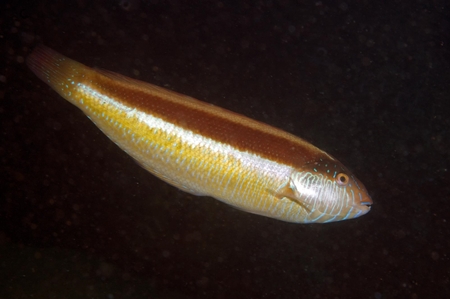General Description
Body moderately long, slender. Juveniles and females are dark reddish-orange above with a pale line along the dorsal surface and yellowish to greenish brown below, with a broad white stripe along the sides. Males develop conspicuous blue lines or scribbles on the head, blue spots on the body scales, and an additional black mid-lateral stripe. To 47 cm.
Biology
Frequently taken on hook and line near exposed reefs in South Australia and Western Australia. Southern Maori Wrasse change sex from female to male during their life cycle and are sexually dimorphic in colour.
Habitat
Exposed rocky reefs, in depths of 1-30 m.
Reefs
Distribution guide
Southern Australia, not common in Victoria.
Species Group
Fishes › Wrasses, rock whitings and allies
Depth
Water Column
Max Size
47 cm
Commercial Species
No
Global Dispersal
Native to Australia
Identify
Conservation Status
- DSE Advisory List : Not listed
- EPBC Act 1999 : Not listed
- IUCN Red List : Not listed








